
Date :2019-06-13
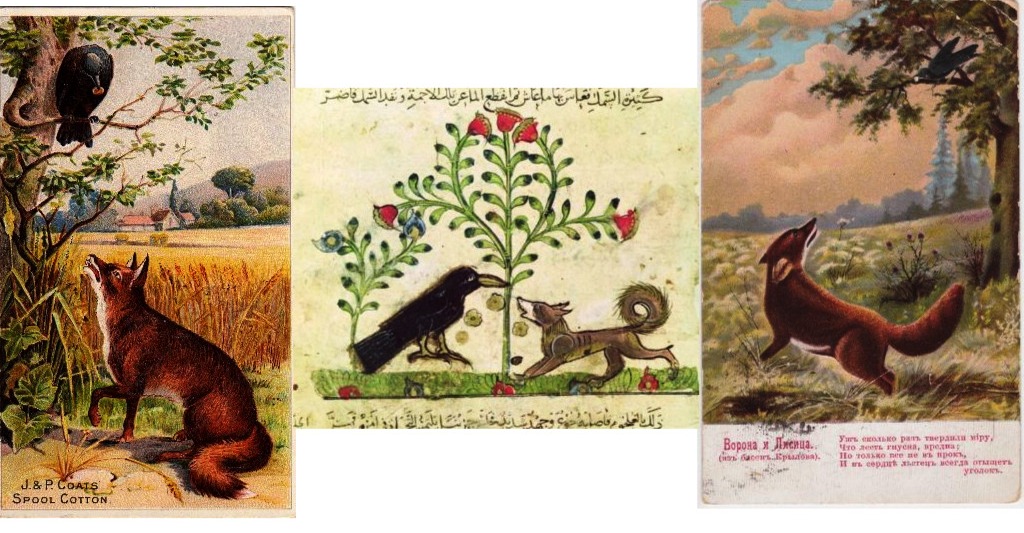
The ancient Indian stories of the Panchatantra, Jataka & Hitopadesha traveled across the world & are known as Anvar-i-Suhaili in Iran and Afghanistan , Kalilah-wa-Dimnah in the Arab world, Aesop’s and La Fontaine Fablesin Greece, France and rest of Europe. These moral stories told through animals and birds are a lesson in values & ethics, providing a common bond across the world.
In the picture above, the Panchatantra fable of The Fox and the Crow has been adapted and illustrated in an old Arabic version of the Kalilah-wa-Dimnah (center), as an Aesop’s Fable on English Trade Cards (left) and on a Russian postcard (right).
Amongst the oldest surviving illustrated manuscripts (in persian) of these stories anywhere in the world, are the ones in the Raza library, Rampur. Many craftsmen in different parts of India, continue the tradition of using these stories as design motifs in their work, such as Kalamkari in Andhra Pradesh, Pattachitra in Orissa , Tankha art in Himalayas etc.
Under the Rohilla Mohalla project, Ari embroidery master craftsman Mubashir Shaikh utilised the varied embroidery techniques that he, his father and brother are proficient in, to represent the Aesops Fables & La Fontaine Fables in the European / Gothic Style and the Panchatantra, Kalilah-wa-Dimnah & Anvar-i-Suhaili stories in the traditional Indian, Arabic and Persian style.
The following products were designed and manufactured entirely by hand under this theme:
Training Focus:
Date :2019-06-13
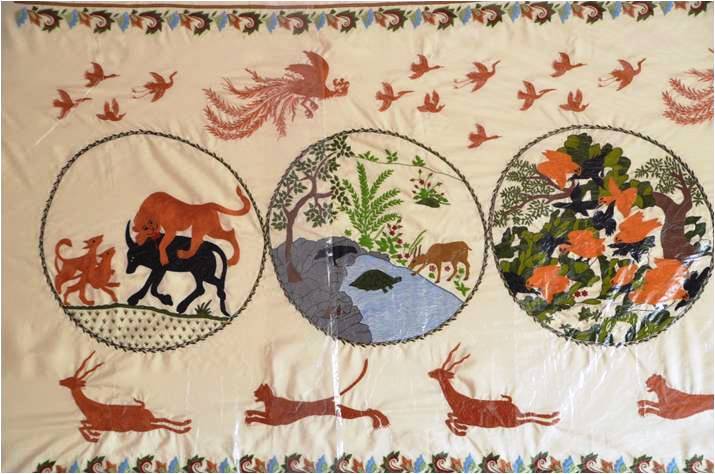
This unique, exquisite and meaningful wall hanging represents in detail and with precision, the Five Tantras (Five Techniques or Strategies of Politics, Public Administration and Niti-sastra (wise code of conduct)as described in the Panchatantra Animal Stories of Vishnu Sharma :
Rampur Zardozi master craftsman Mubashir Shaikh represented the five tantras with rich Ari thread embroidery and embroidered other animals and the mythical simurgh along the borders to add to the richness and beauty of the wall hanging. This piece was embroidered during the holy month of Ramazan, and took an entire month of work to complete. The embroidery was done on raw silk fabric to add to the richness of the wall hanging, but at the same time also made the use of Ari embroidery a little more challenging for the artisans.
Date :2019-06-13
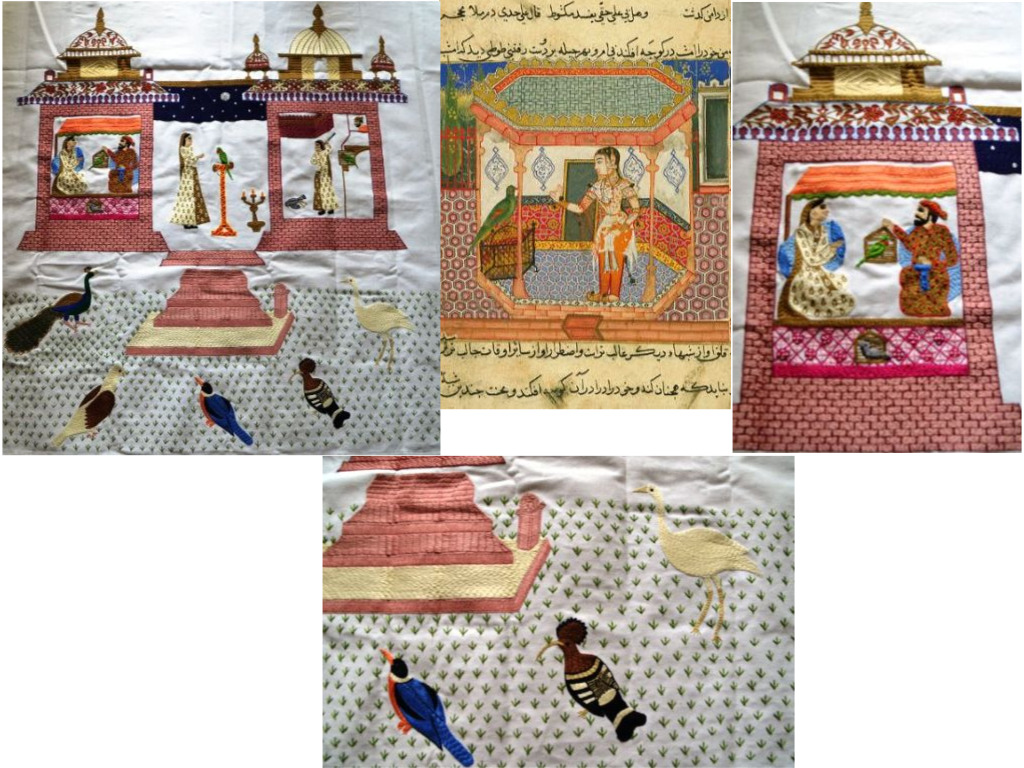
The Tutinama or Tales of a Parrot is a 14th century Persian fable comprising of 52 moralistic stories narrated by a parrot to her mistress, night after night, for 52 successive nights to prevent her from adultery in absence of her husband. An illustrated version containing 250 miniature paintings was commissioned by the Mughal Emperor Akbar in the later part of the 16th century. The work in Persian is said to be derived from a 12th century work in Sanskrit titled Sukasaptati or Seventy Tales of the Parrot.
Rampur Zardozi master craftsman Mubashir Shaikh used rich Ari thread embroidery to represent this Persian tale as illustrated through miniature paintings. He added other birds listening attentively to the Tales of the Parrot as well to add to the richness and beauty of the wall hanging. This piece took 10-15 days of work to complete. The embroidery was done on cotton casement fabric.
Date :2019-06-13
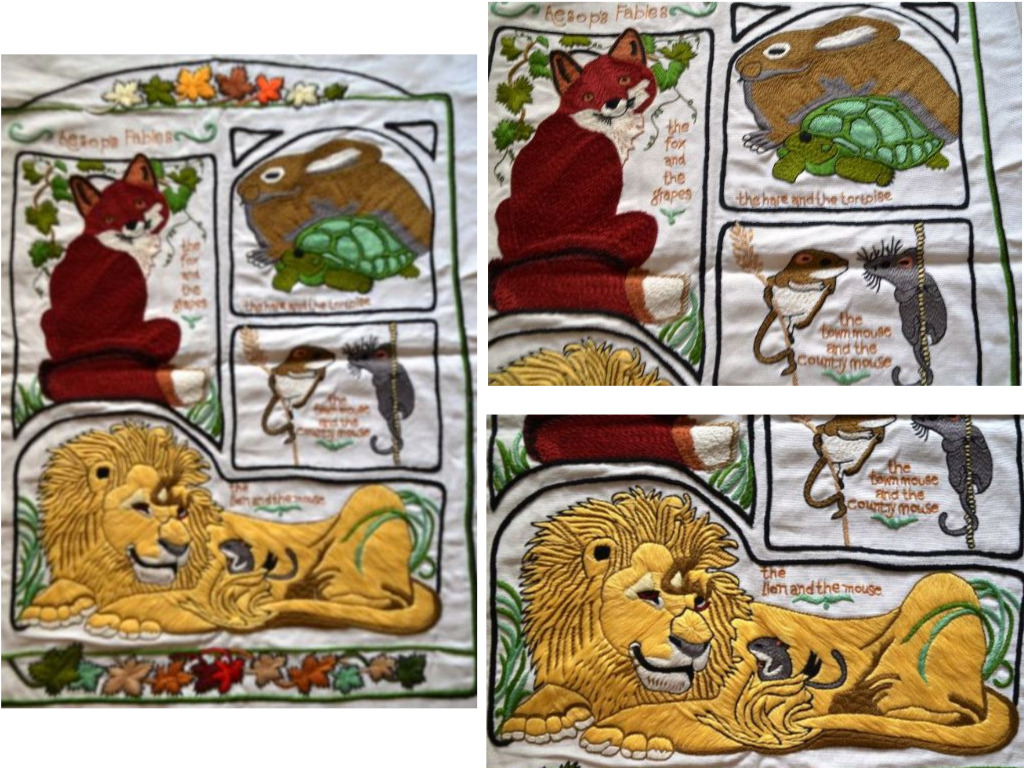
The Aesop’s Fables popular across Europe are attributed to the 6th / 7th century BC Greek storyteller Aesop. They belonged to the oral tradition of story- telling and have several stories in common with the Panchatantra.
This wall hanging has been hand embroidered by Rampur Zardozi master craftsman Mubashir Shaikh using rich Ari thread embroidery. Popular Aesop’s Fables such as the “Fox and the Grapes”, “The Lion and the Mouse” and the “Hare and the Tortoise” have been embroidered on this wall hanging by using appropriate Ari embroidery stitches to represent the European designs which illustrate these stories. This piece took 10-15 days of work to complete and the embroidery was done on cotton casement fabric.
Date :2019-06-13
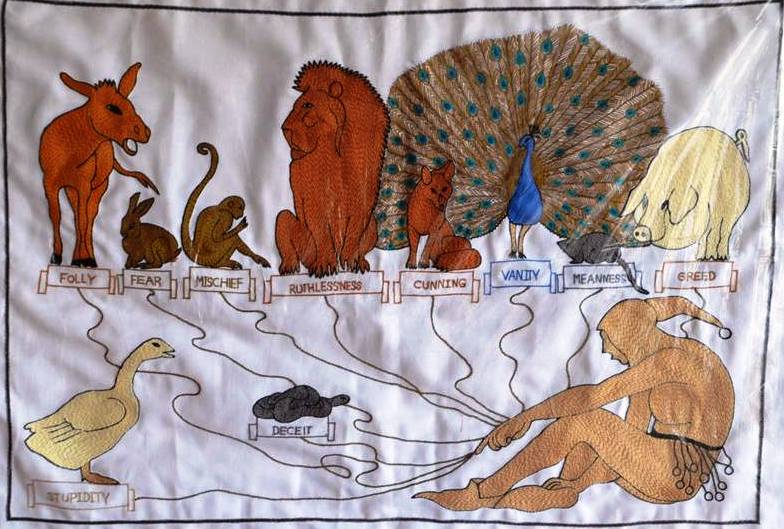
This wall hanging artistically represents the characteristics that different animals represent through the popular animal fables across the globe. For instance a peacock may represent vanity, a monkey would mean mischief and a lion ruthlessness etc. This wall hanging has been created using ari embroidery on cotton fabric, and took a week’s work to complete.
Date :2019-06-13
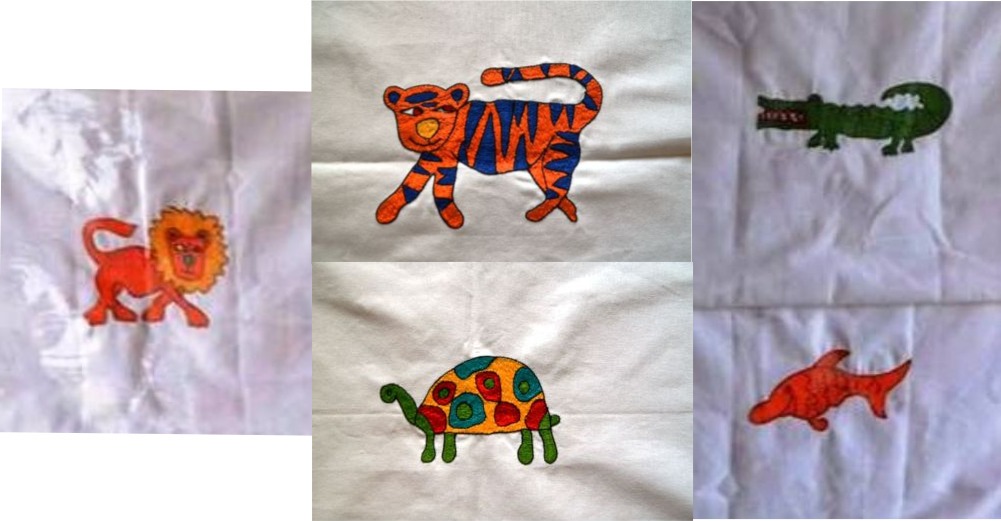
This set of cushion covers represent modern children’s story telling styles through endearing animal motifs. The cushion covers are made of cotton fabric, each piece taking 3-4 hours to complete.